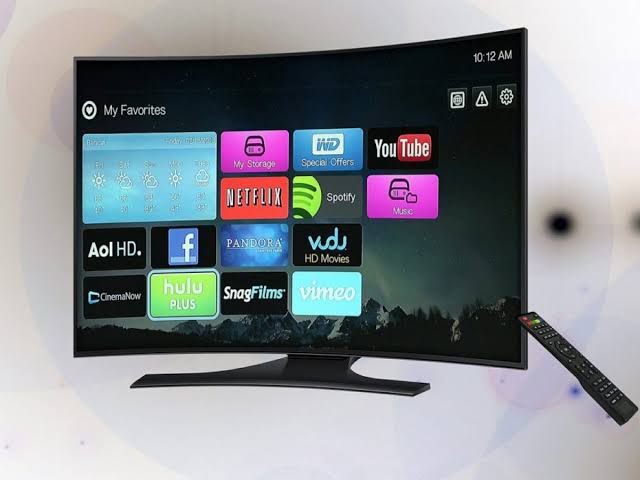The role of smart TVs in home entertainment systems today has grown beyond just being a screen for watching movies or shows. These devices have become central hubs for entertainment, connectivity, and even smart living. With the rise of streaming platforms, advanced display technologies, and integration with other gadgets, smart TVs now define the modern living room experience. Their importance in today’s households cannot be overstated, as they have transformed how families and individuals consume media and connect to the digital world.
Integration with Streaming Services
One of the biggest contributions of smart TVs to home entertainment systems is their seamless integration with streaming platforms. In the past, viewers needed separate devices like DVD players or external streaming boxes, but today’s smart TVs come with built-in apps for Netflix, Disney+, Hulu, Amazon Prime Video, and many others.
This direct access to streaming libraries has redefined how people consume content. Instead of being tied to cable schedules, families can now binge-watch entire series or access exclusive releases instantly. With the growing popularity of 4K and even 8K streaming, smart TVs also ensure the picture quality matches the expectations of modern viewers.
Additionally, the convenience of having multiple platforms accessible in one device reduces clutter in the living room and eliminates the need for extra hardware.
Enhanced Picture and Sound Quality
Modern smart TVs are not just about access to apps—they also focus on creating a cinematic experience at home. Features such as 4K Ultra HD, OLED, QLED, and Mini-LED panels have transformed visual quality. These technologies provide sharper images, deeper contrasts, and vibrant colors, making movies, sports, and games feel more immersive.
Audio systems are also being enhanced. Many smart TVs now come with Dolby Atmos support or built-in high-quality speakers. Some even integrate directly with soundbars or home theater systems via wireless connections, creating an immersive surround-sound experience without complex setups.
This level of innovation makes smart TVs not just a replacement for old televisions but an upgrade to full-scale entertainment centers.
Connectivity with Smart Home Ecosystems
Another major role of smart TVs today is their ability to connect with other smart devices in the home. Many models are compatible with voice assistants such as Amazon Alexa, Google Assistant, or Apple’s Siri. This allows users to control their TV hands-free or even integrate it into broader smart home routines.
For example, a smart TV can be programmed to dim the lights when a movie starts, or to display live camera feeds from smart security systems. Some TVs also support smart device control dashboards, allowing homeowners to monitor thermostats, door locks, and lighting directly from their screens.
This level of interconnectivity makes the smart TV more than an entertainment device; it becomes a command center for the smart home.
Gaming and Interactive Features
Gaming has also found a new home within smart TVs. With the rise of cloud gaming services like Xbox Cloud Gaming, NVIDIA GeForce Now, and PlayStation Plus streaming, smart TVs are now capable of running high-quality games without a console. All that’s required is a compatible controller and a strong internet connection.
This is a game-changer for households where gaming consoles may not be affordable or practical. Beyond gaming, interactive features such as fitness apps, karaoke platforms, and educational content also expand the role of smart TVs in everyday life.
Families can work out together, kids can enjoy learning apps, and party guests can engage with music and games—all from the television screen.
Personalization and Artificial Intelligence
AI has also improved the role of smart TVs in entertainment systems. Many models now use AI to recommend shows and movies based on viewing habits. Others adapt sound and picture quality automatically depending on the type of content being watched.
For example, when watching sports, AI-enhanced settings can boost clarity and motion handling, while for movies it adjusts color tones for a more cinematic experience. These personalized touches help enhance viewing satisfaction and ensure that users get the best experience without constantly adjusting settings.
Cost Efficiency and Convenience
Smart TVs also play a role in reducing overall household entertainment costs. While cable subscriptions were once the norm, streaming services provide a cheaper and more customizable way to access content. A smart TV combines these services into one device, eliminating the need for additional gadgets like streaming sticks or set-top boxes.
With Wi-Fi connectivity, screen mirroring, and wireless casting, smartphones and laptops can easily connect to smart TVs for presentations, family photo sharing, or music streaming. This versatility makes the smart TV a multipurpose device that caters to all members of the household.
Final Thoughts
The role of smart TVs in home entertainment systems today extends far beyond watching television shows. They serve as powerful multimedia hubs, offering access to streaming platforms, advanced display and sound technology, smart home integration, gaming capabilities, and personalized viewing experiences.
In 2025, smart TVs are no longer just appliances but essential lifestyle tools. They bring families together, provide convenience, and adapt to the needs of a modern digital home. As technology continues to evolve, their role will only expand, making them indispensable in shaping how people experience entertainment in everyday life.



